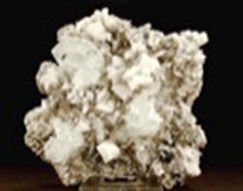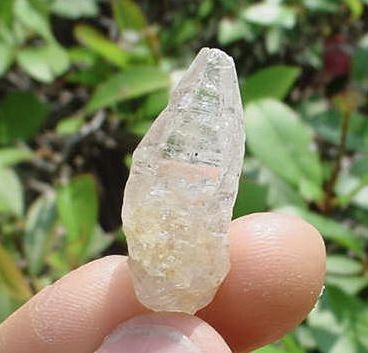A page from the "Causes of Color" exhibit...
Why are some gemstones like ruby and emerald red and green, yet diamond is colorless?

As with many things in life, when it comes to gemstones, looks can be deceiving. While all are beautiful, rubies, sapphires, and diamonds each attain their brilliant color through different means. Transition metals can transform even the plainest crystal into a coveted treasure.
Causes of color in gemstones
When impurities are added to colorless gemstones, brilliant colors are frequently produced. When chromium is added to colorless corundum, a red ruby is born, and a green emerald emerges when chromium is added to colorless beryl. Diamonds can be colored blue or yellow by the addition of impurities. The role of impurities in causing color is different here (see semiconductors). Through yet another mechanism (see charge transfer), the addition of impurities to corundum can produce a deep blue sapphire. Amethyst’s violet tint is the result of iron impurities in crystalline quartz, although this impurity acts differently than the chromium impurity that produces the red color of ruby (see color centers). Many gemstones’ distinctive colors come from the presence of transition metals as impurities in an otherwise transparent crystal lattice. This can be because of a so-called crystal-field or, alternatively, a ligand-field effect. In this crystal field or ligand field effect, the field exerted by the host crystal on the guest impurity fixes the energy levels of the latter as a photon absorber. Put another way, the chemical bonding between the host crystal and guest impurity always involves the donation of electrons from the host crystal to empty energy levels in the metal impurity, binding the metal to the crystal.
|
||||||||||||||||||||||||||||||
Examples of different gemstones, colors, and impurities
Crystal field theory makes assumptions that are not very realistic, yet it gives surprisingly good qualitative results. It can be described non-mathematically, and is a special case of ligand field theory, which gives good quantitative results. This in turn is a special case of the general molecular orbital theory.
Why are corundum and beryl colorless, yet rubies are red and emeralds are green?
Gemstones
The simplest and most distinctive gemstone is the diamond. It is strong, brilliant, and colorless. A diamond consists of an infinite array of carbon atoms linked in a rigid framework extending in all directions, which makes diamond the hardest substance known. By being held together so tightly, diamonds are incapable of absorbing visible light and are therefore colorless. There are no unpaired electrons in their structure.
Transparent Goshenite, the colorless variety of beryl, is shown here with orthoclase and muscovite (left). Colorless gemstones corundum (right) and beryl, like diamonds, have properties characteristic of gemstones — brilliance, transparency, and strength. They are pure substances, held together in similar strong frameworks.
For corundum, the repeating unit is aluminum oxide; as the second hardest known material, corundum is used in grinding wheels and emery paper. For beryl, the repeating unit is beryllium aluminum silicate. With four elements in its repeating unit (beryllium, aluminum, silicon, and oxygen), the framework is less rigid and so beryl is not as hard as corundum. Again, all the electrons are tied up and there is no absorption of visible light. These materials are therefore colorless.





